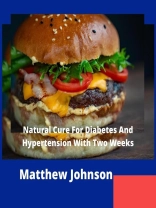Diabetes is a condition that affects how your body uses food for energy. When you eat, the carbohydrate found in most foods is changed into a type of fuel called glucose. Glucose circulates in the blood and is the major energy source for the body. In order for cells in muscles and other tissues in the body to use glucose for energy, a hormone called insulin is required. Insulin is produced by the beta cells of the pancreas, a gland located deep in the abdomen partially behind the stomach. When you have diabetes, either the pancreas does not make enough insulin, or the body does not respond to the insulin that is made. Sometimes, a person with diabetes can have both of these problems. When insulin is not doing its job of moving glucose into the cell, glucose builds up in the bloodstream and tissues, and is excreted in the urine. When this happens, the body loses its main source of fuel. Diabetes occurs when glucose levels in the blood stream go above a normal level (hyperglycemia). There are two main types of diabetes: Type 1 and Type 2 Type 1 1 out of 10 people with diabetes has type 1 diabetes. It occurs most often in children or young adults. The pancreas produces little or no insulin making it necessary to inject insulin every day. The causes of type 1 diabetes are complex and still not completely understood. One appears to inherit the genetic predisposition which is activated by a trigger such as a virus or chemical. This starts an attack on the immune system that results in the destruction of the beta cells of the pancreas. Type 2 9 out of 10 people with diabetes have type 2 diabetes. It occurs most often in people over 40 though younger people can be diagnosed. In type 2, either there is not enough insulin, or, more commonly, the insulin that is available is not working properly (insulin resistance). The greatest risk factors for type 2 diabetes are family history of type 2 diabetes, being overweight and getting little or no exercise. The treatment is healthy eating, physical activity and often medications. Sometimes, insulin injections help control blood glucose levels. Gestational Diabetes Gestational diabetes first develops during pregnancy because hormonal changes create an insulin resistant state that causes the body to increase insulin production, unfortunately, if the pancreas cannot keep pace with the increased demand, high blood glucose levels result. In order to protect the baby’s health, it is very important that the mother’s blood glucose be carefully controlled during pregnancy. For most women, once the baby is born, blood glucose levels return to normal, but these women are at an increased risk of developing type 2 diabetes later in life.
Jack Mark
Natural Cure For Diabetes And Hypertension Within Two Weeks [EPUB ebook]
Natural Cure For Diabetes And Hypertension Within Two Weeks [EPUB ebook]
Mua cuốn sách điện tử này và nhận thêm 1 cuốn MIỄN PHÍ!
Ngôn ngữ Anh ● định dạng EPUB ● ISBN 9786468927110 ● Kích thước tập tin 0.2 MB ● Nhà xuất bản omo ● Được phát hành 2020 ● Có thể tải xuống 24 tháng ● Tiền tệ EUR ● TÔI 7663206 ● Sao chép bảo vệ không có












